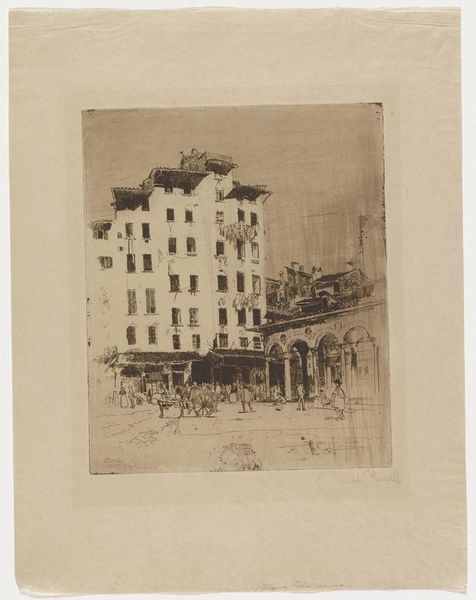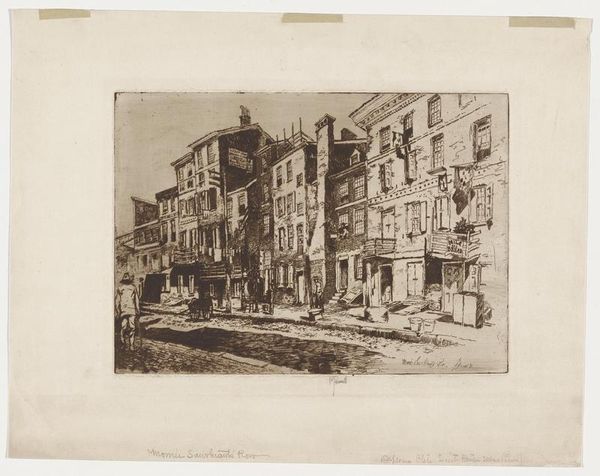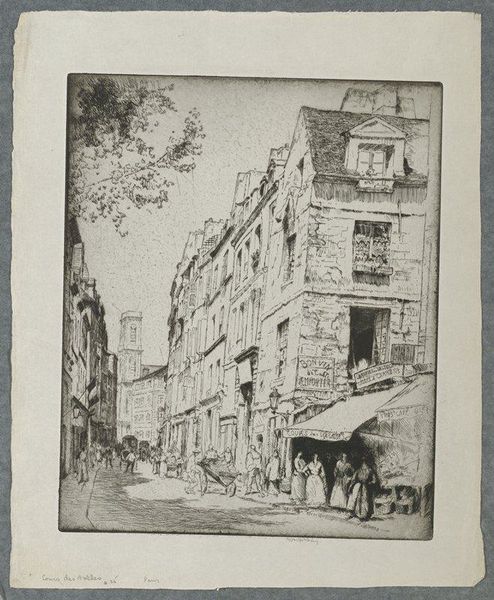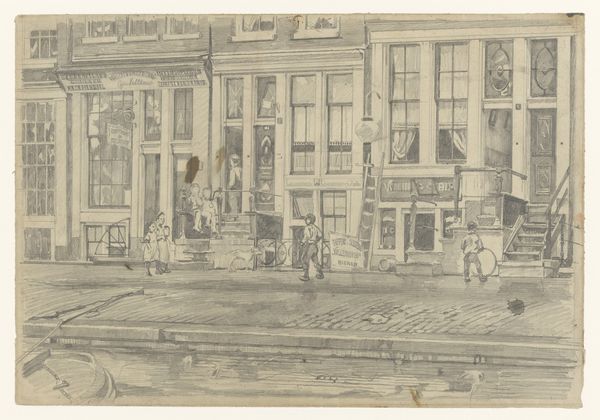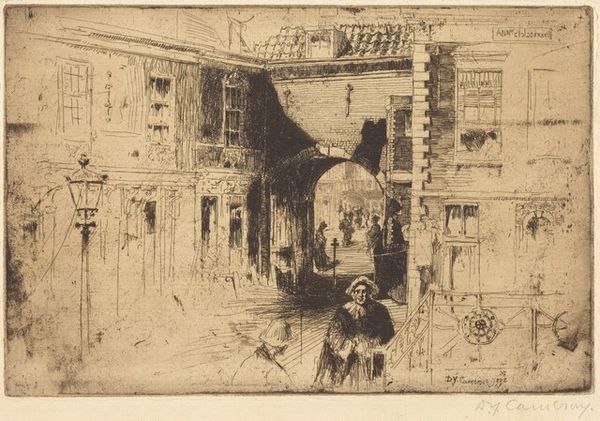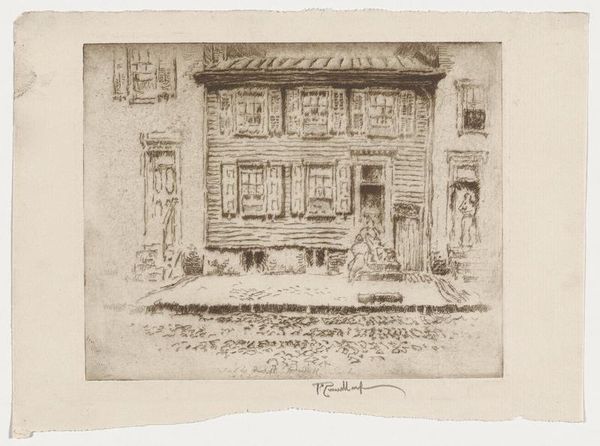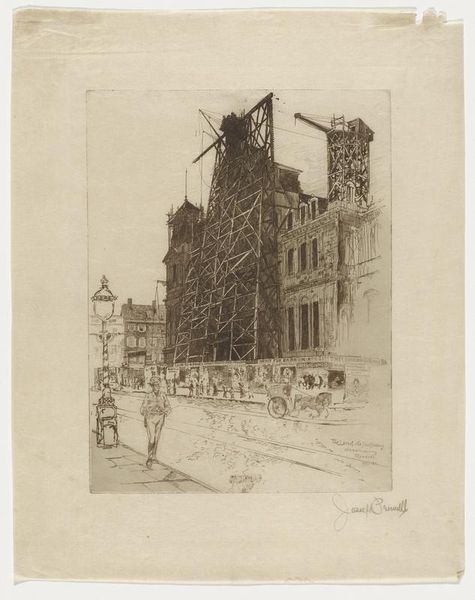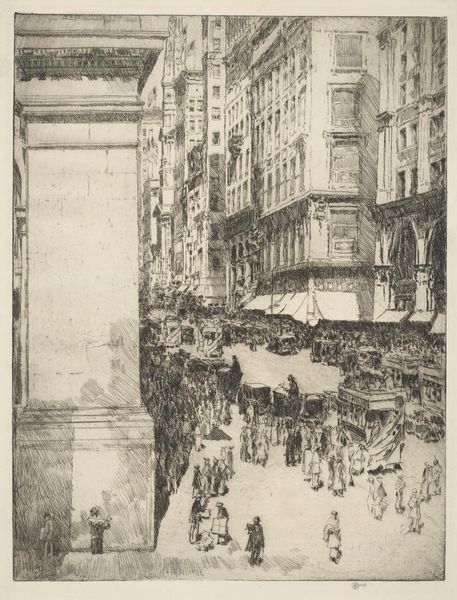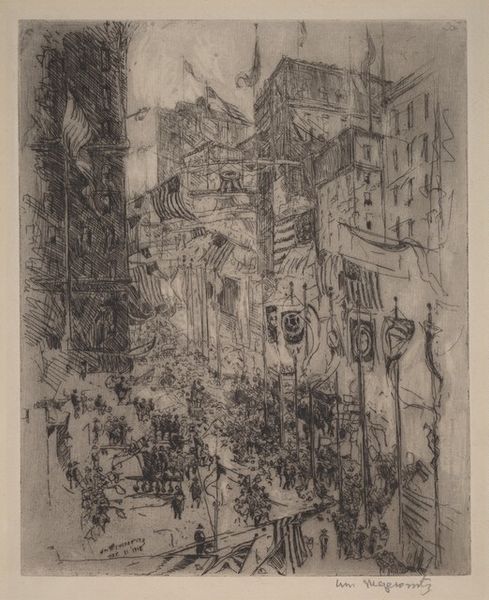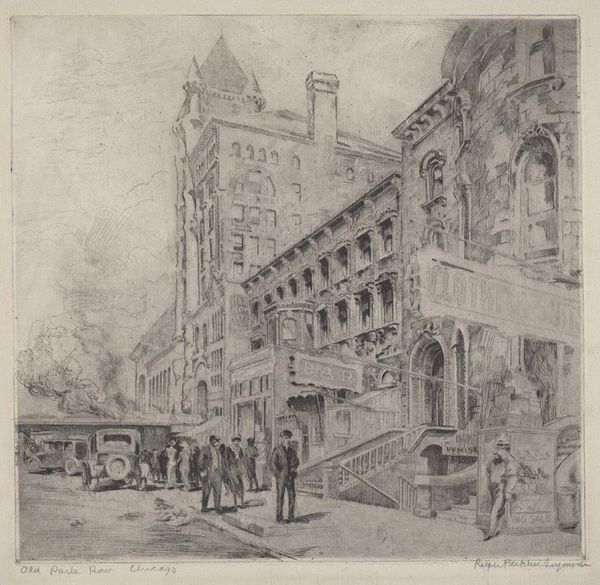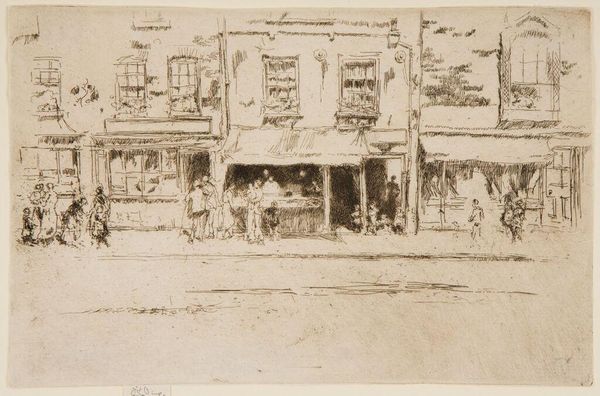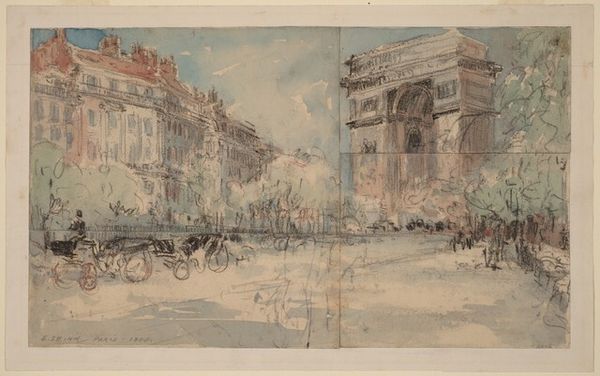
drawing, print, etching, ink
#
drawing
# print
#
etching
#
landscape
#
etching
#
ink
#
cityscape
Dimensions: plate: 20 x 30.1 cm (7 7/8 x 11 7/8 in.) sheet: 26.5 x 40.4 cm (10 7/16 x 15 7/8 in.)
Copyright: National Gallery of Art: CC0 1.0
Editor: Here we have Ernest Stephen Lumsden's "Old Kashmir," an etching from 1922. It's a very detailed cityscape; you can almost feel the weight of the stone buildings reflected in the water. What strikes you most about this piece? Curator: It immediately brings to mind the politics of representation, doesn't it? A Western artist depicting a landscape so culturally rich. What role did colonialism play in shaping Lumsden's gaze, and how does that influence our own viewing of the work today? The etching highlights an "Old" Kashmir—implying perhaps, a nostalgia for a pre-modern era, conveniently ignoring the lived realities and complex social structures of the time. Editor: That's a perspective I hadn't fully considered. I was focused on the technical skill and the composition, especially how the reflection adds another layer to the image. Curator: And that technical skill can't be separated from its context. Consider who had the means to create and circulate these images and who was being represented, and how. This image might serve to Exoticize the “East,” reinforcing power dynamics through aesthetic choices. Who is this image for, and at what cost? How might a contemporary Kashmiri artist depict the same scene differently, reclaiming agency over their own narrative? Editor: So you're saying we need to be critical of what's being shown and who's showing it. Curator: Precisely. By interrogating the socio-political backdrop of Lumsden's work, we unveil layers of meaning often glossed over in traditional art historical analysis. We start to see the ways in which art participates in, or challenges, dominant ideologies. Editor: I see it in a completely different light now. This etching becomes a starting point for a much larger conversation about representation and power. Curator: Exactly, and that’s the beauty of art history: It invites us to question, to challenge, and to understand the world around us more critically.
Comments
No comments
Be the first to comment and join the conversation on the ultimate creative platform.
